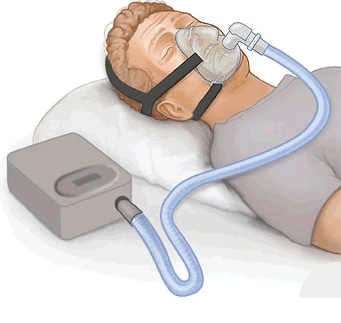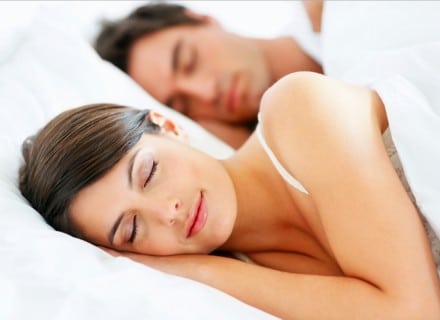Obstructive sleep apnea (or OSA) is a condition caused by the obstruction of a person’s airways and it’s characterized by constant pauses in breathing while sleeping. This pausing of breathing and than possibly gasping for air can be scary and does cause bad sleep. You wake up not rested in the morning.
OSA is also associated with an increase in throat muscle relaxation and more effort done by the chest muscles that work harder to pull more air into the lungs.
Fortunately, there is a wide variety of treatment options for obstructive sleep apnea.
Here are the best of them:
1. Airway Pressure Devices
you can use various airway pressure devices that adjust to your breathing pressure level automatically. They are called auto-CPAP. You can also find BIPAP, or bilevel positive airway pressure.
2. CPAP (Continuous Positive Airway Pressure)
CPAP machines can deliver enough air pressure to help you get a good night’s sleep. CPAP are actually masks you should wear over your nose or over your nose and mouth. They provide enough air so that you can enjoy your sleep. According to various studies, these masks have the potential to improve sleep and prevent the airways from collapsing. CPAP, BIPAP or VPAP (variable positive airway pressure) devices are recommended in cases of moderate and severe OSA.
3. Oral Appliances
The oral appliances continue to gain popularity, as the public becomes increasingly aware of the huge benefits of these devices. At the moment there are over 100 sleep apnea appliances available on the market, most of which can easily be inserted in the mouth or placed over it. To further promote these devices, the American Academy of Sleep Medicine has decided to approve OAT (Oral Appliance Therapy), as a first line of defense for patients diagnosed with mild and moderate OSA (Obstructive Sleep Apnea ). Additionally, OAT is also recommended for patients with severe OSA who are unable to tolerate CPAP. You can purchase several over-the-counter appliances over the Internet or at certain drug stores. However, even though they are cheaper than FDA-approved oral appliances and are promoted extensively, home-made appliances are not truly the best. Sometimes these appliances can cause unwanted side effects, such as tooth movement, jaw issues, gum irritations & bleedings or even worse sleep apnea.
4. Custom-Made Oral Appliances
Another OSA treatment that more and more people find effective is custom-made oral appliances. However, if you decide that a custom-made oral appliance is the right choice for you, then you should consult with an experienced dentist.
Finding a dentist should not be such a daunting task. For instance, you can check with the known organization Snoring Isn’t Sexy. They have a wide range of professionals trained to help people with OSA. Their trained professionals are always ready to conduct a full evaluation of your mouth, teeth and temporomandibular joint, in order to ensure your jaw structure can support a custom-made oral appliance.
After you have found a dentist, you need to follow a prescribed schedule and meet regularly with your doctor in order to ensure the custom-made oral appliance you wear is a proper fit and not adversely affecting you. It takes less than a few days to adjust to wearing a custom-made appliance.
Additionally, the dentist may suggest a weight-loss plan for you, if necessary. According to recent statistics, over 70% of men and women who have OSA also suffer from obesity. Because of this, health care professionals encourage them to lose the weight, to live a healthy lifestyle that includes fitness, and stay in control of what they eat.
5. Nasal Decongestants
Probably the cheapest treatment option for OSA is nasal decongestants. In mild cases of sleep apnea or snoring, a nasal decongestant could prove everything that you need. However, in more severe cases, you may consider surgery on the nose to improve airflow.
6. Positional Therapy
This is a groundbreaking therapy method that focuses solely on people who have OSA and are sleeping on their back. For these people, they can enjoy relief from sleep apnea by simply changing their sleeping posture and becoming side-sleepers. Using pillows or tennis balls to prevent them from rolling onto their backs.
7. Surgery
The last treatment for Obstructive sleep apnea is surgery. However, this last resort is usually more effective at treating snoring and less effective at treating OSA. The surgery for OSA is complicated, because the surgeon needs to determine exactly what area of your nasal cavity is affected.
Given the several sites that could be the cause of airway obstruction, there are several types of OSA surgeries. Probably the most common and effective is uvulopalatopharyngoplasty, or UPPP, coming with a success rate of over 50%. The surgery requires follow-ups appointments to assess the sleep apnea.

